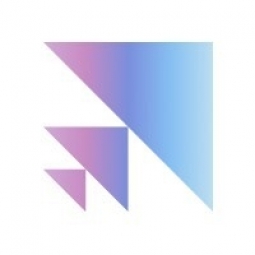Technology Category
- Analytics & Modeling - Computer Vision Software
- Sensors - Autonomous Driving Sensors
Applicable Industries
- Equipment & Machinery
Applicable Functions
- Facility Management
- Quality Assurance
Use Cases
- Inventory Management
- Object Detection
Services
- Testing & Certification
About The Customer
TimberEye is a company that provides a mobile application leveraging computer vision and LiDAR mapping technology to enable lumber suppliers and buyers to categorize and scale logs faster, more safely, and with better accuracy. The app is used by some of the largest log exporters in South America and in the US Southeast. It scales the logs, manages inventory, and also tracks the log’s journey from the forest, onto trucks, into loading facilities, and then on to ships overseas. TimberEye does this for hundreds of thousands of logs and countless shipments each month. As TimberEye expands into Canada, Europe, and New Zealand, their technology has the potential to not only accelerate and increase the accuracy of log scaling but also reduce injury rates and make it safer for the people working in these industries.
The Challenge
The TimberEye team faced a significant challenge in enhancing their mobile application's log scaling capabilities. The app, which uses computer vision and LiDAR mapping technology, was designed to help lumber suppliers and buyers categorize and scale logs faster, more safely, and with better accuracy. However, the team wanted to experiment with an instance segmentation model to further improve the app's scaling capabilities. The process of annotating images for segmentation proved to be a daunting task. TimberEye CEO and Founder Scott Gregg attempted to annotate a segmentation dataset on his own, but after three days and only 1,000 images labeled, he was burned out. The process was significantly more challenging and time-consuming than annotating images for object detection, requiring 100-200 mouse clicks per image instead of just 4. The team was overwhelmed and stuck, with only 5% of the dataset they needed to annotate complete.
The Solution
The TimberEye team turned to Scale Rapid as early beta testers to solve their annotation problem. Scale Rapid provided a fast, easy, and quality annotation solution. The team gave Scale very specific instructions for their use case, requiring them to create tight circular boundaries around the cross section of each log, and ignoring certain information in the periphery. Scale Rapid was able to deliver the data they needed in perfect shape within three days. The TimberEye team simply had to upload images, provide instructions, and follow the process until they received perfect data back. They only had to provide a bit of feedback for the early batches and do some audits. The rest of the time, they could watch as Scale Rapid knocked out thousands of perfect annotations in hours.
Operational Impact
Quantitative Benefit

Case Study missing?
Start adding your own!
Register with your work email and create a new case study profile for your business.
Related Case Studies.

Case Study
Smart Water Filtration Systems
Before working with Ayla Networks, Ozner was already using cloud connectivity to identify and solve water-filtration system malfunctions as well as to monitor filter cartridges for replacements.But, in June 2015, Ozner executives talked with Ayla about how the company might further improve its water systems with IoT technology. They liked what they heard from Ayla, but the executives needed to be sure that Ayla’s Agile IoT Platform provided the security and reliability Ozner required.

Case Study
IoT enabled Fleet Management with MindSphere
In view of growing competition, Gämmerler had a strong need to remain competitive via process optimization, reliability and gentle handling of printed products, even at highest press speeds. In addition, a digitalization initiative also included developing a key differentiation via data-driven services offers.

Case Study
Predictive Maintenance for Industrial Chillers
For global leaders in the industrial chiller manufacturing, reliability of the entire production process is of the utmost importance. Chillers are refrigeration systems that produce ice water to provide cooling for a process or industrial application. One of those leaders sought a way to respond to asset performance issues, even before they occur. The intelligence to guarantee maximum reliability of cooling devices is embedded (pre-alarming). A pre-alarming phase means that the cooling device still works, but symptoms may appear, telling manufacturers that a failure is likely to occur in the near future. Chillers who are not internet connected at that moment, provide little insight in this pre-alarming phase.

Case Study
Premium Appliance Producer Innovates with Internet of Everything
Sub-Zero faced the largest product launch in the company’s history:It wanted to launch 60 new products as scheduled while simultaneously opening a new “greenfield” production facility, yet still adhering to stringent quality requirements and manage issues from new supply-chain partners. A the same time, it wanted to increase staff productivity time and collaboration while reducing travel and costs.

Case Study
Integration of PLC with IoT for Bosch Rexroth
The application arises from the need to monitor and anticipate the problems of one or more machines managed by a PLC. These problems, often resulting from the accumulation over time of small discrepancies, require, when they occur, ex post technical operations maintenance.

Case Study
Data Gathering Solution for Joy Global
Joy Global's existing business processes required customers to work through an unstable legacy system to collect mass volumes of data. With inadequate processes and tools, field level analytics were not sufficient to properly inform business decisions.







